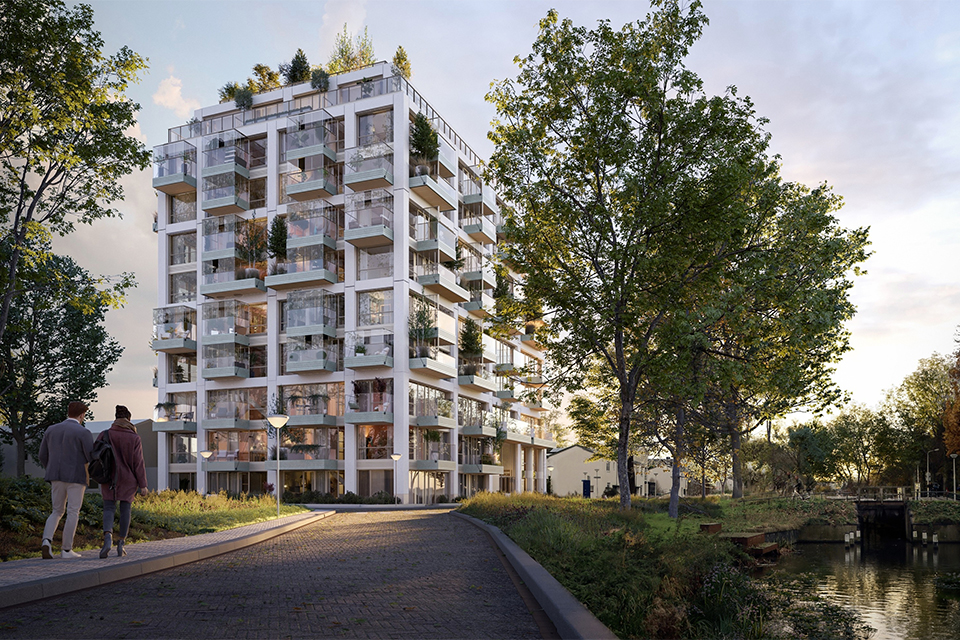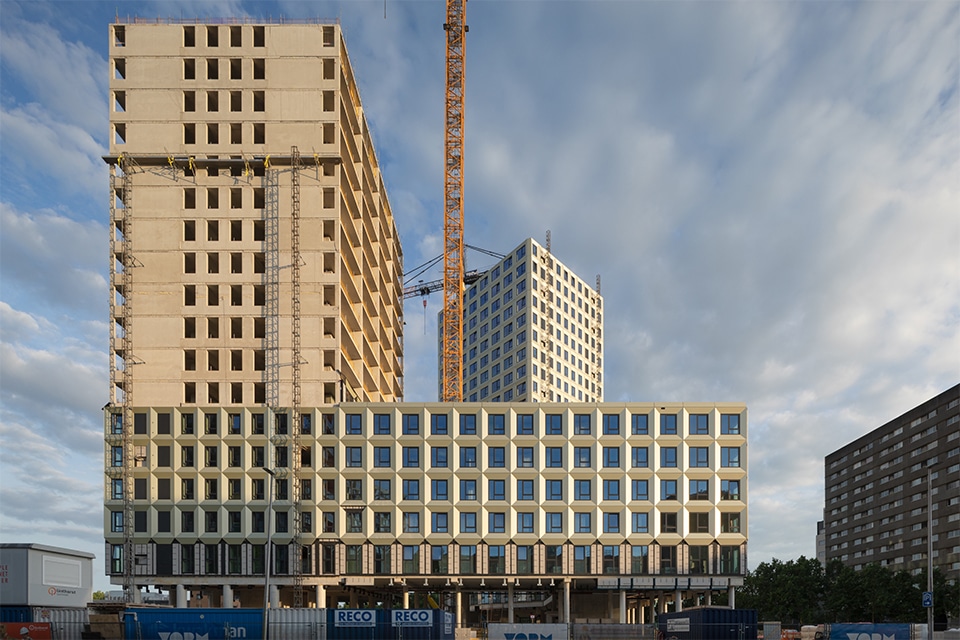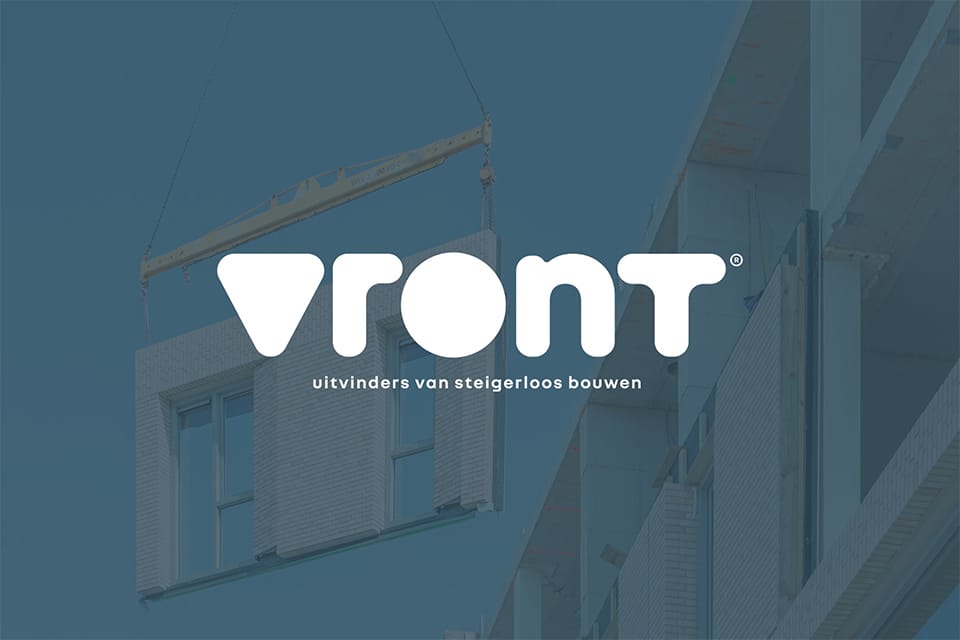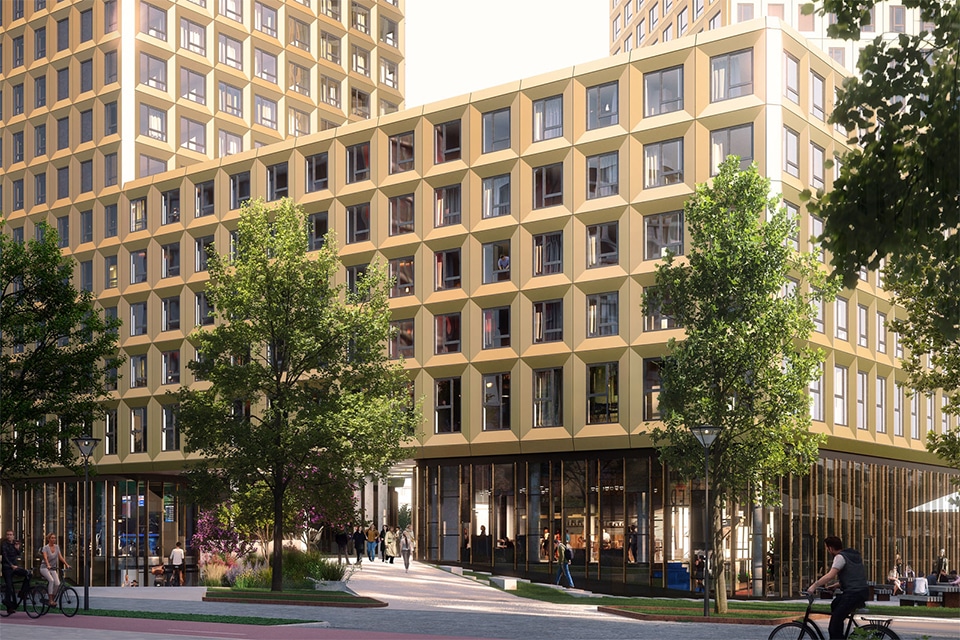
Beautiful total solution for eye-catching Lock House
A real eye-catcher - that's what you can call Sluishuis in Amsterdam. Due to its shape and location above the water, this new apartment complex is quite an architectural challenge. Construction combination VORM and BESIX Nederland chose Doka as their partner for the formwork and supports. A fine example of intensive collaboration.
Between the dense buildings of the inner city and the vast landscape, Sluishuis is being built on the edge of Amsterdam's IJburg neighborhood. A remarkable "landmark" by the well-known Danish architectural firm BIG in collaboration with BARCODE Architects of Rotterdam. Sluishuis, with a size of 46,000 m2 includes 442 apartments and gives a completely new meaning to the concept of living by the water.
Special shape
Basically, the apartment complex consists of four parts that collectively form a square, open block that seems to float on the water. Of the four sides, two slope down from above; the other two sides slope up from below, making the building appear to be lifted out of the water to the eye. This creates an open, transparent building that appears different from every vantage point. Because the building gradually lowers toward the IJburg neighborhood, a natural transition to the smaller-scale surrounding buildings is a fact.
Edging out as a challenge
Sluishuis is being developed by the development combination VORM and BESIX RED. In addition to the 442 apartments, the construction includes a two-story underground parking below sea level, moorings for boats and commercial space. The unusual design of the building with different cantilevers brings considerable challenges. "The biggest of these are the cantilever walls and the associated support," said Dirk Michiels, BESIX Nederland's chief contractor.
Early collaboration
For the formwork and supports, construction combination VORM and BESIX Netherlands chose Doka. Dirk Michiels explains: "In addition to the confidence in the long-term cooperation we have with Doka, it also has the knowledge required for this project. A special solution was required for the cantilever part of the building. We developed this together with Doka, where we were excellently able to fall back on the knowledge and experience of Doka's engineering department."
Smart solution
Because Doka was involved in the project from an early stage, it was able to contribute ideas on the most suitable construction method. Particular attention was paid to developing a clever solution for the sloping walls. Based on the Top50 formwork system, a sliding solution was developed for the sloping walls. This was combined with a Truss table formwork. This relatively lightweight formwork can be erected quickly and flexibly and lends itself perfectly to supporting cantilevers. Doka panel and column formwork, decking and floor props were also used extensively.



